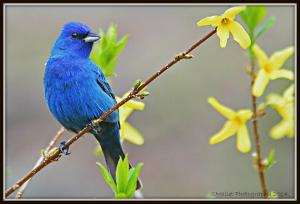Conservation Lands Management
Bearsden Conservation Area
Early Successional Habitat Creation Project
A full year has passed since the 22-acre site was harvested. The drought of 2016 and again in the summer of 2017 have slowed the regeneration of young trees at the site, but it is greening. Bluebirds, Tree Swallows and House Wrens utilized the nest boxes erected at the site. A site visit September 16, 2017, we were pleased to find more than a dozen New England Buckmoths Hemileuca lucina coursing around the site. The host plant for the Buckmoths is White Meadowsweet Spiraea alba which has occupied the site in abundance. 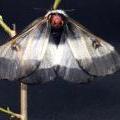
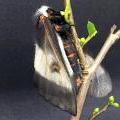
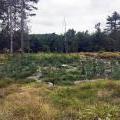
The presence of the New England Buckmoth in this previously heavily wooded site indicates our early successional objectives are being met.
Project Description
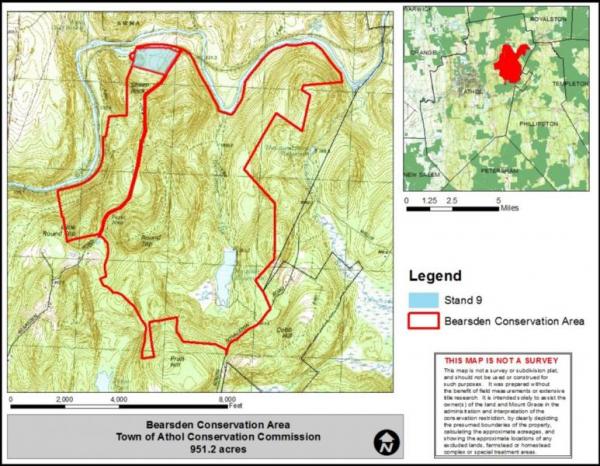
Since the 1970’s, the 950-acre Bearsden Conservation Area has provided the core of an extensive interior forest reserve from South Royalston and Phillipston to Athol along a remote section of the Millers River. The area is composed of 14 parcels in excess of 951 acres permanently protected and under the control of the Athol Conservation Commission. This project is an outgrowth of a larger planning process undertaken by the Athol Conservation Commission, under Commission Chair Bob Muzzy, beginning with a Forest Stewardship Plan developed in 2011. The plan was prepared by Licensed Forester Michael Mauri. Financial assistance was provided by DCR. The trees to be cut were marked by Mauri, who also prepared the necessary cutting permit, sold the timber by competitive bid, and provided project supervision.
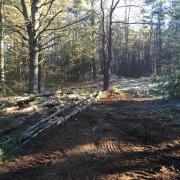 Michael Stange, a Licensed Timber Harvester from Athol, won the bid and began logging in December 2015, with son Zak, working steadily through June 2016. The cost of the post-logging mulch-mowing was covered by a competitive grant provided by MA DFW.
Michael Stange, a Licensed Timber Harvester from Athol, won the bid and began logging in December 2015, with son Zak, working steadily through June 2016. The cost of the post-logging mulch-mowing was covered by a competitive grant provided by MA DFW.
The mowing was done by Pantermehl Land Clearing, of Ashfield. The purpose of the mowing was to accelerate the post-logging growth of early-successional vegetation.
Dave Small of the Athol Bird and Nature Club and Jamie Briggs of the Athol Conservation Commission prepared the successful grant application.
The project consists of 22-acre White Pine removal adjacent to railroad tracks and the Millers River. The removal of the closed canopy White Pine, Pinus strobus, followed by mechanical mulching of the remaining slash will provide a seedbed for the regeneration of an early successional forest at this site. The well-drained, sandy, nutrient-poor soils and remnant Pitch Pine, Pinus rigida, and expanses of low bush Blueberry, Vaccinium angustifolium, will provide excellent conditions and potential sources for expansion of desirable species in the newly harvested area. The remote location and lack of significant populations of invasive species make the site less likely to become overwhelmed by undesirable plants. A small number of glossy buckthorn, Rhamnus frangula, most less than 1/2 a meter in height, have recently been discovered in the area. These plants will be monitored and control will be addressed.
The creation of early successional habitat is a central component of the Massachusetts State Wildlife Action Plan. Shrubland species including but not limited to Woodcock, Ruffed Grouse, Whip-poor-will, Prairie Warbler, and Indigo Bunting will benefit from including this habitat in the 950-acre Bearsden Conservation Area. This project will provide a significant early successional forest habitat along the riparian section of the Millers River.
Project Deliverables
Objective 1: Create 22-acre parcel of early successional forest habitat by mulching of remaining slash from the previous harvest of white pine overstory.
Task 1:
- Mechanical mulching of previously cut white pines, and mulching of adjacent small tree and shrub species.
- Care will be taken to limit deep mulch which could inhibit regeneration of the site.
Below Eastern section of project showing residual effect of mulching
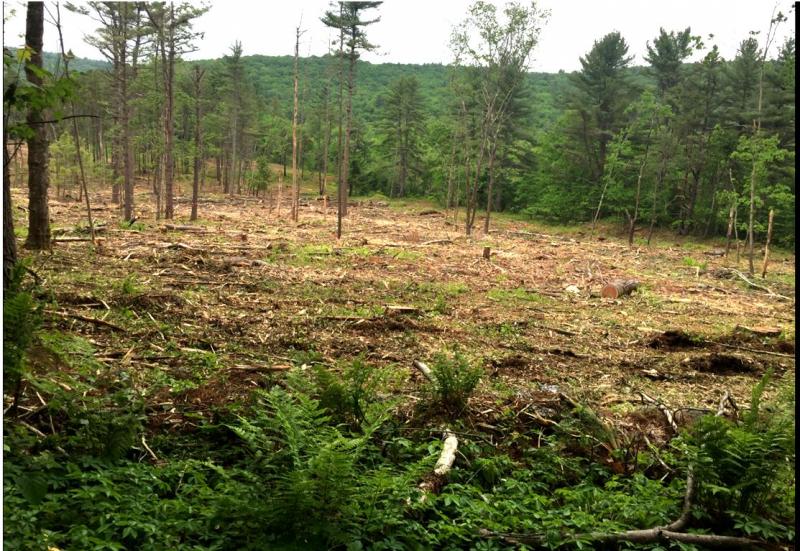
Western end of project showing residual mulched area ready for regeneration
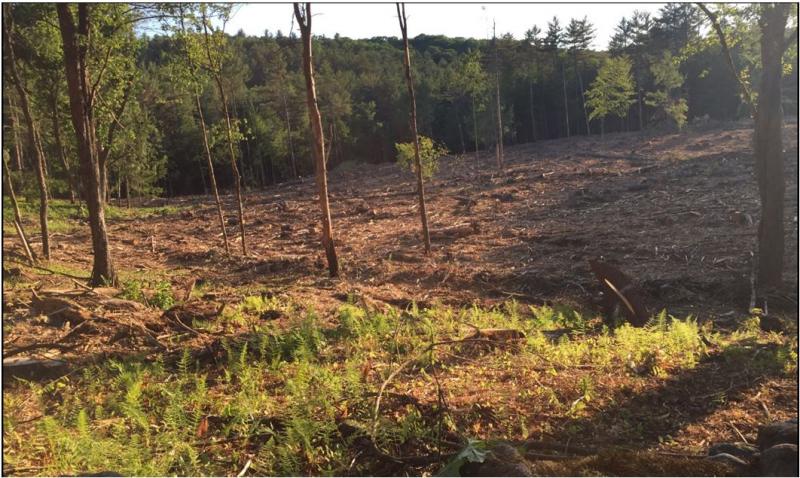
Project area looking north
- Areas with existing dense low-bush blueberry and remnant Pitch Pines will have limited ground disturbance.
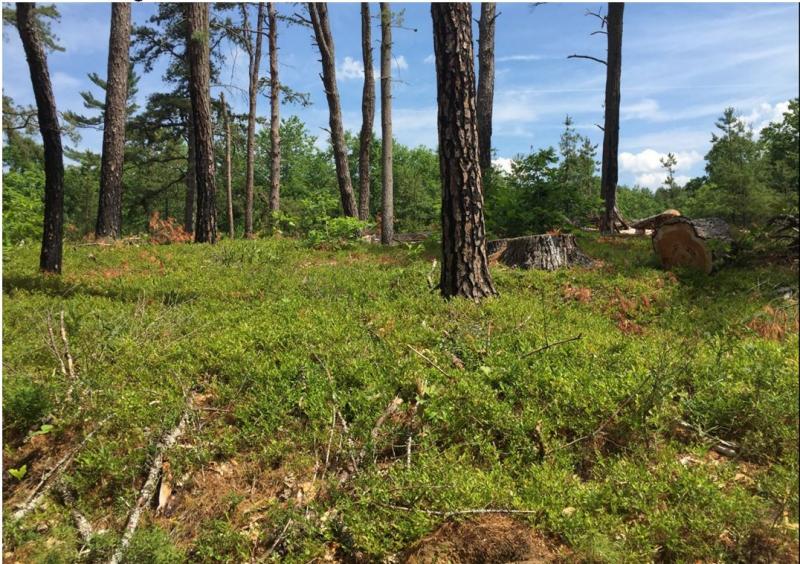
Lowbush Blueberry and remnant Pitch Pine Pinus rigida retained and protected through operation
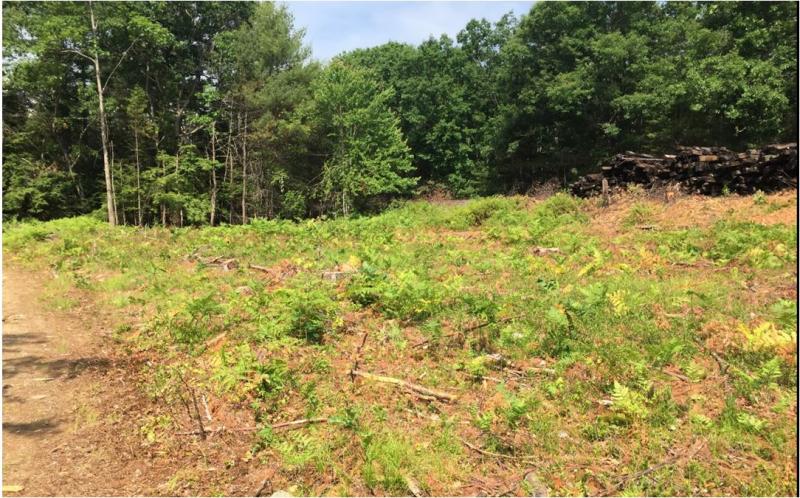
Lowbush Blueberry with minimal disturbance near railroad right of way
- Stumps up to 10” will be flushed, material left on the ground will be no longer than 18" and no bigger than 2" in diameter (except where we designate piles or even whole stems to be left) areas with stones will be mowed to within 6” the top of the stones and may as a result have larger pieces left.
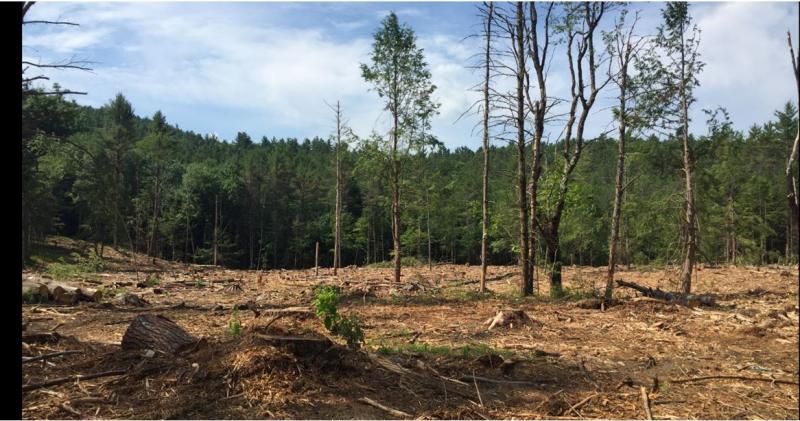
Looking west across project showing all small stumps mulched, Standing trees with retention.
Below Operator J Gould with brontosaurus used in mulching operation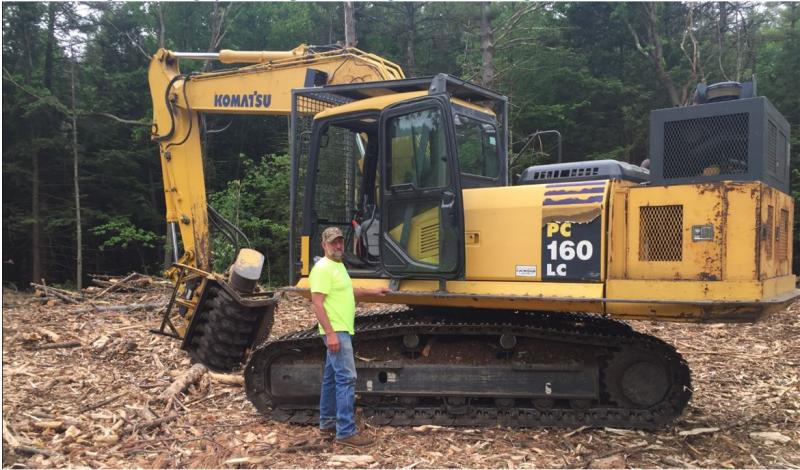
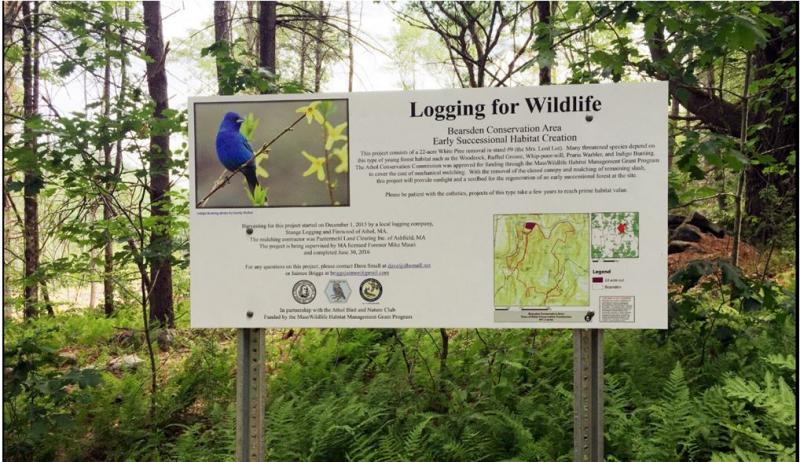
Communicating the purpose of the project is important, follow the link Find out more about the Habitat Grant program: This sign was designed by Jaimee Briggs and Dave Small to capture the basic elements of the project. Indigo Bunting Image used with permission of photographer Sandra Mallet.
The State Wildlife Action Plan outlines the many species that have been identified with declining populations and outlines some strategies to help stabilize these populations.
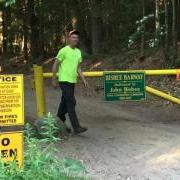
Many thanks to Licensed Forester Mike Mauri for the writing the forest stewardship plan for the Bearsden Conservation Area and designing, marking, and supervising this project.


